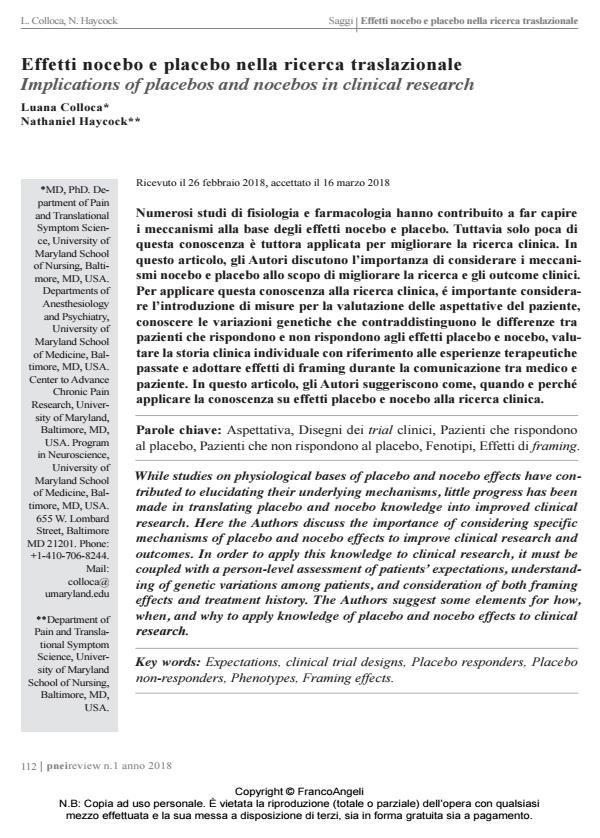Implications of placebos and nocebos in clinical research
Journal title PNEI REVIEW
Author/s Luana Colloca, Nathaniel Haycock
Publishing Year 2018 Issue 2018/1
Language English Pages 16 P. 112-127 File size 1116 KB
DOI 10.3280/PNEI2018-001009
DOI is like a bar code for intellectual property: to have more infomation
click here
Below, you can see the article first page
If you want to buy this article in PDF format, you can do it, following the instructions to buy download credits

FrancoAngeli is member of Publishers International Linking Association, Inc (PILA), a not-for-profit association which run the CrossRef service enabling links to and from online scholarly content.
While studies on physiological bases of placebo and nocebo effects have contributed to elucidating their underlying mechanisms, little progress has been made in translating placebo and nocebo knowledge into improved clinical research. Here the Authors discuss the importance of considering specific mechanisms of placebo and nocebo effects to improve clinical research and outcomes. In order to apply this knowledge to clinical research, it must be coupled with a person-level assessment of patients’ expectations, understanding of genetic variations among patients, and consideration of both framing effects and treatment history. The Authors suggest some elements for how, when, and why to apply knowledge of placebo and nocebo effects to clinical research.
Keywords: Expectations, clinical trial designs, Placebo responders, Placebo non-responders, Phenotypes, Framing effects.
Luana Colloca, Nathaniel Haycock, Implications of placebos and nocebos in clinical research in "PNEI REVIEW" 1/2018, pp 112-127, DOI: 10.3280/PNEI2018-001009